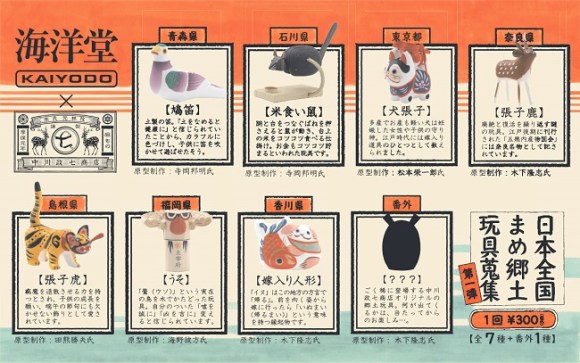
No matter how the times change, kids still love toys. Whether it was ancient Egypt or the mid-Edo period, toys have always been a big part of the way children passed their time in play. Even with all our fancy technology today, from 3DSs to Oculus Rifts, kids still make time to run around with their favorite dolls or plastic guns. Of course, Japan is full of figures of all varieties and price tags, but gachapon occupy a position of near invincibility–you can put pretty much anything in those little plastic balls and they’re practically guaranteed to sell.
And, starting soon, you’ll also be able to buy remakes of traditional Japanese toys from the early 18th century. You’ll finally get the opportunity to play like a kid from the Edo Period while waiting for your 3DS to recharge!
Produced by Kaiyoudo and Nakagawa Masashichi Shoten Co., Ltd., a company with a history stretching back to the 1700s, these toys perfectly complement Nakagawa’s mission to “revitalize Japanese crafts.” The eight figures (one remains a mystery) are based on traditional toys from Japan’s various prefectures. Though only eight pieces will be made available at the end of October, the goal is to eventually release figures representative of each of Japan’s 47 prefectures.
The seven figures, pictured above, come from Shimane, Aomori, Fukuoka, Nara, Kagawa, Ishikawa, and Tokyo, respectively. The traditional toys often had religious significance, like the tiger (called a “hariko tora”) from Shimane, which was believed to keep illness away and was given to children to ensure they’d grow. The “uso” (a homonym for “bullfinch” and “lie”) from Fukuoka was a wooden toy designed to look like a bird and was believed to turn “lies into truth” and “bad luck into good luck.”
This colorful bird toy from Aomori above is called a “hatobue,” which literally means “pigeon whistle.” The traditional toy was, as you have probably figured out, a whistle for children. We can only imagine how many were “accidentally lost” by annoyed parents almost three hundred years ago!
The “inu hariko” pictured above is the Tokyo toy and is actually supposed to be a dog, though you can be forgiven for thinking it was a cat like we did! Dogs were considered guardian deities for pregnant women and children, since dogs often and easily gave birth.
Naturally, Nara’s representative toy is a deer, called a “hariko shika.” The deer were representative of the cycle of death and rebirth.
While the original toys were made of wood or papier-mâché (hariko means papier-mâché), based on these photos of the unpainted toys, it looks like Nakagawa’s gachapon versions are plastic. While that’s a bit of a bummer, we can’t really complain–they only cost 300 yen (US$2.80) each! Of course, you’ll be getting them at random, so who knows how much you’ll actually have to spend to get a full set…
▼Note the mystery toy at the top right…could that be Totoro?
▼The seven figures painted and arranged in a display case.
Currently, the gachapon toys are set to be released at the end of October, so you have plenty of time to save up your 100 yen coins! Right now, our favorite is definitely the uso toys–there’s nothing we love quite as much as a good pun!
Sources: ITMedia, Nakagawa Masashichi Shoten Co., Ltd., Nakagawa Masashichi Shoten Co., Ltd. (English)
Images: Nakagawa Masashichi Shoten Co., Ltd.

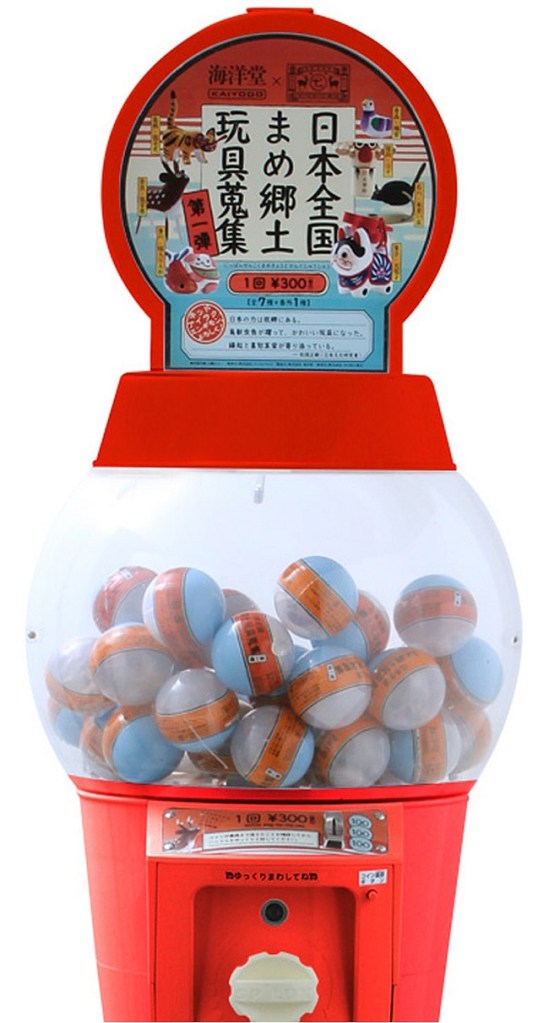
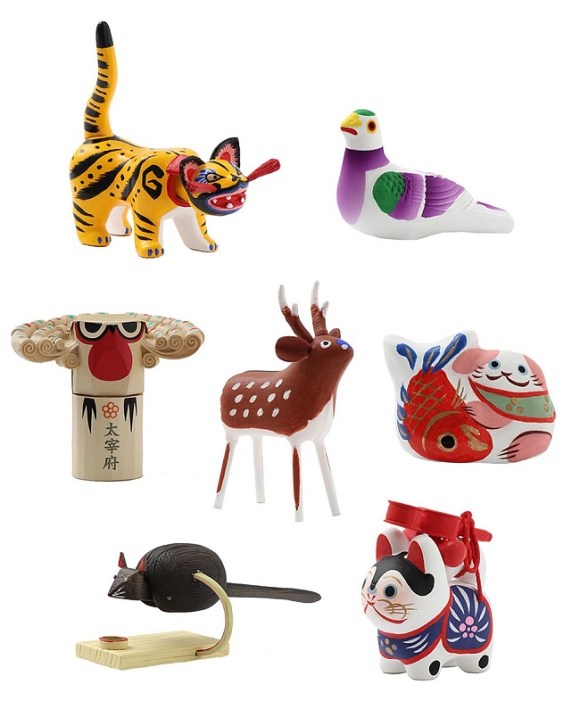
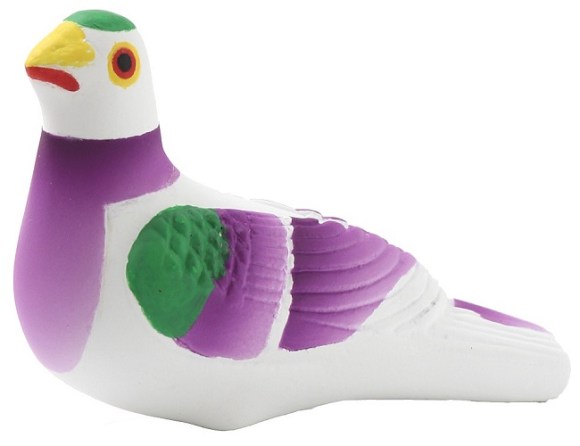
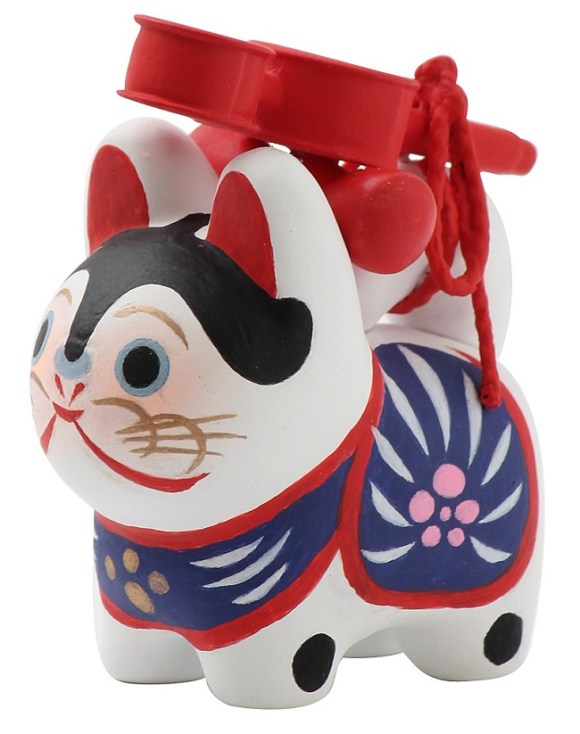
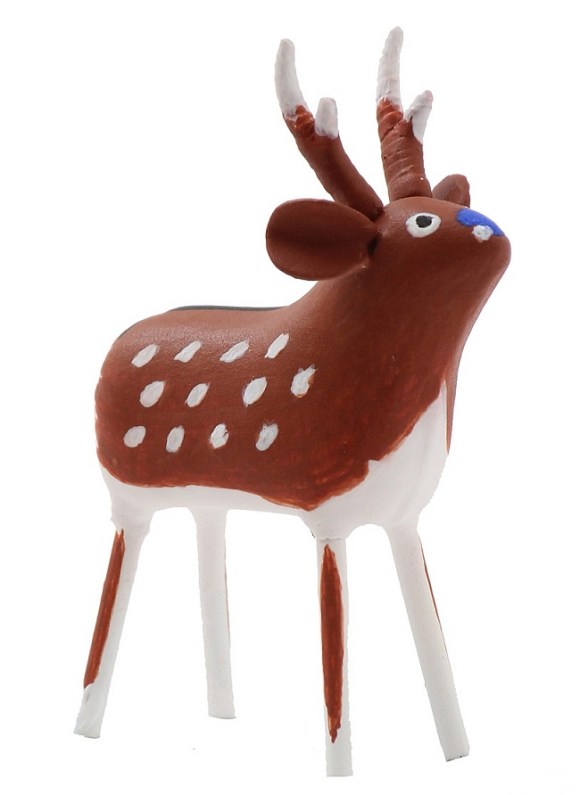
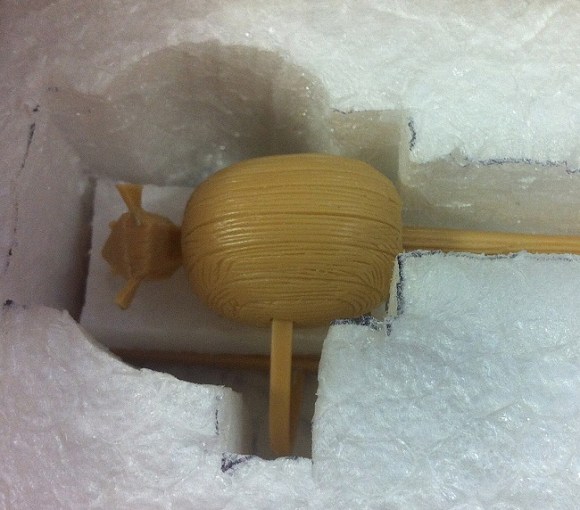
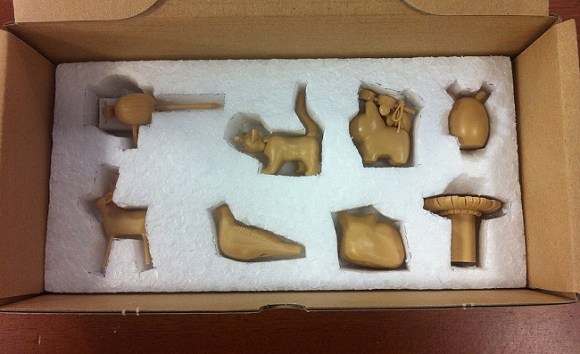
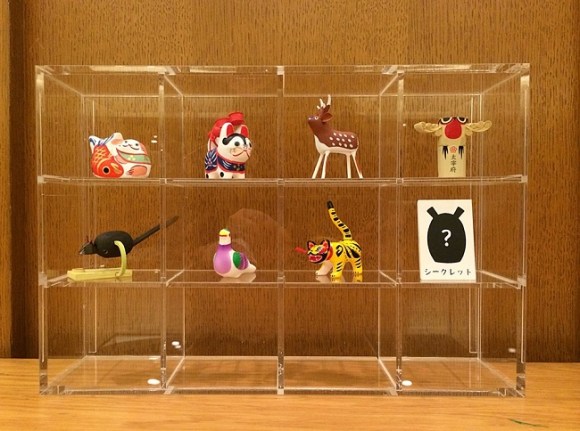
 Tiny Buddhist statues: These new gachapon figures are more pious than adorable!
Tiny Buddhist statues: These new gachapon figures are more pious than adorable! Mutant parrot-banana hybrids appearing across Japan 【Photos】
Mutant parrot-banana hybrids appearing across Japan 【Photos】 Insult or homage? Lady (Taking a) Liberty toys have us scratching our heads
Insult or homage? Lady (Taking a) Liberty toys have us scratching our heads TRANSFORM! And write while you’re at it, too — with these cool shape-shifting Transformers pens!
TRANSFORM! And write while you’re at it, too — with these cool shape-shifting Transformers pens! Super-expensive capsule toys – Trying out Japan’s Premium Gachapon machine【Photos】
Super-expensive capsule toys – Trying out Japan’s Premium Gachapon machine【Photos】 Foreigner’s request for help in Tokyo makes us sad for the state of society
Foreigner’s request for help in Tokyo makes us sad for the state of society Red light district sushi restaurant in Tokyo shows us just how wrong we were about it
Red light district sushi restaurant in Tokyo shows us just how wrong we were about it Osaka governor suggests lowering voting age to 0 to curb population decline
Osaka governor suggests lowering voting age to 0 to curb population decline Historical figures get manga makeovers from artists of Spy x Family, My Hero Academia and more
Historical figures get manga makeovers from artists of Spy x Family, My Hero Academia and more Suntory x Super Mario collaboration creates a clever way to transform into Mario【Videos】
Suntory x Super Mario collaboration creates a clever way to transform into Mario【Videos】 Akihabara pop-up shop sells goods made by Japanese prison inmates
Akihabara pop-up shop sells goods made by Japanese prison inmates Ghibli Park now selling “Grilled Frogs” from food cart in Valley of Witches
Ghibli Park now selling “Grilled Frogs” from food cart in Valley of Witches Smash Bros. director Sakurai stabs Kirby in the face, has delicious justification for it
Smash Bros. director Sakurai stabs Kirby in the face, has delicious justification for it Studio Ghibli unveils Mother’s Day gift set that captures the love in My Neighbour Totoro
Studio Ghibli unveils Mother’s Day gift set that captures the love in My Neighbour Totoro Japan’s massive matcha parfait weighs 6 kilos, contains hidden surprises for anyone who eats it
Japan’s massive matcha parfait weighs 6 kilos, contains hidden surprises for anyone who eats it McDonald’s new Happy Meals offer up cute and practical Sanrio lifestyle goods
McDonald’s new Happy Meals offer up cute and practical Sanrio lifestyle goods Japanese ramen restaurants under pressure from new yen banknotes
Japanese ramen restaurants under pressure from new yen banknotes French Fries Bread in Tokyo’s Shibuya becomes a hit on social media
French Fries Bread in Tokyo’s Shibuya becomes a hit on social media Studio Ghibli releases new action figures featuring Nausicaä of the Valley of the Wind characters
Studio Ghibli releases new action figures featuring Nausicaä of the Valley of the Wind characters New private rooms on Tokaido Shinkansen change the way we travel from Tokyo to Kyoto
New private rooms on Tokaido Shinkansen change the way we travel from Tokyo to Kyoto Tokyo Tsukiji fish market site to be redeveloped with 50,000-seat stadium, hotel, shopping center
Tokyo Tsukiji fish market site to be redeveloped with 50,000-seat stadium, hotel, shopping center All-you-can-drink Starbucks and amazing views part of Tokyo’s new 170 meter-high sky lounge
All-you-can-drink Starbucks and amazing views part of Tokyo’s new 170 meter-high sky lounge Beautiful Ghibli sealing wax kits let you create accessories and elegant letter decorations【Pics】
Beautiful Ghibli sealing wax kits let you create accessories and elegant letter decorations【Pics】 Studio Ghibli releases Kiki’s Delivery Service chocolate cake pouches in Japan
Studio Ghibli releases Kiki’s Delivery Service chocolate cake pouches in Japan New definition of “Japanese whiskey” goes into effect to prevent fakes from fooling overseas buyers
New definition of “Japanese whiskey” goes into effect to prevent fakes from fooling overseas buyers Our Japanese reporter visits Costco in the U.S., finds super American and very Japanese things
Our Japanese reporter visits Costco in the U.S., finds super American and very Japanese things More foreign tourists than ever before in history visited Japan last month
More foreign tourists than ever before in history visited Japan last month New Pokémon cakes let you eat your way through Pikachu and all the Eevee evolutions
New Pokémon cakes let you eat your way through Pikachu and all the Eevee evolutions Sales of Japan’s most convenient train ticket/shopping payment cards suspended indefinitely
Sales of Japan’s most convenient train ticket/shopping payment cards suspended indefinitely Sold-out Studio Ghibli desktop humidifiers are back so Totoro can help you through the dry season
Sold-out Studio Ghibli desktop humidifiers are back so Totoro can help you through the dry season Japanese government to make first change to romanization spelling rules since the 1950s
Japanese government to make first change to romanization spelling rules since the 1950s Ghibli founders Toshio Suzuki and Hayao Miyazaki contribute to Japanese whisky Totoro label design
Ghibli founders Toshio Suzuki and Hayao Miyazaki contribute to Japanese whisky Totoro label design Doraemon found buried at sea as scene from 1993 anime becomes real life【Photos】
Doraemon found buried at sea as scene from 1993 anime becomes real life【Photos】 Tokyo’s most famous Starbucks is closed
Tokyo’s most famous Starbucks is closed One Piece characters’ nationalities revealed, but fans have mixed opinions
One Piece characters’ nationalities revealed, but fans have mixed opinions We asked a Uniqlo employee what four things we should buy and their suggestions didn’t disappoint
We asked a Uniqlo employee what four things we should buy and their suggestions didn’t disappoint Princesses, fruits, and blacksmiths: Study reveals the 30 most unusual family names in Japan
Princesses, fruits, and blacksmiths: Study reveals the 30 most unusual family names in Japan Creepy or cute? Come face to face with deep sea creatures as gachapon sushi toys!!
Creepy or cute? Come face to face with deep sea creatures as gachapon sushi toys!! It’s a trap (Japanese capsule toy)!
It’s a trap (Japanese capsule toy)! New gachapon set introduces capsule toy cat toys for your capsule toy cats!
New gachapon set introduces capsule toy cat toys for your capsule toy cats! Father and son dissect a gachapon capsule toy machine to show us its magical insides【Video】
Father and son dissect a gachapon capsule toy machine to show us its magical insides【Video】 Daruma Man: The Japanese gacha capsule toy series we never knew we needed
Daruma Man: The Japanese gacha capsule toy series we never knew we needed Why would anyone buy a tiny toy folding chair? We ask the designers and find out!
Why would anyone buy a tiny toy folding chair? We ask the designers and find out! Bandai to launch online capsule machines controlled by smartphone
Bandai to launch online capsule machines controlled by smartphone Seriously, what’s up with Japan’s fixation with animals going to the bathroom as capsule toys?
Seriously, what’s up with Japan’s fixation with animals going to the bathroom as capsule toys? Godzilla and fellow kaiju monsters apologise at Japanese press conference for acts of destruction
Godzilla and fellow kaiju monsters apologise at Japanese press conference for acts of destruction Mini karate-chop roof tiles you can actually destroy are Japan’s newest capsule toy【Videos】
Mini karate-chop roof tiles you can actually destroy are Japan’s newest capsule toy【Videos】 New light-up Japanese bar sign capsule toys make drinking at home feel like a night on the town
New light-up Japanese bar sign capsule toys make drinking at home feel like a night on the town Japan’s love affair with sea bugs continues — sausage isopods now available as gachapon toys!
Japan’s love affair with sea bugs continues — sausage isopods now available as gachapon toys! New capsule toy collection features military commander samurai armour from the Sengoku Period
New capsule toy collection features military commander samurai armour from the Sengoku Period Beat your phone into submission with these Street Fighter 2 capsule toy stands
Beat your phone into submission with these Street Fighter 2 capsule toy stands Doggy Bread figures are back, still so cute we could eat them up (if they weren’t plastic)
Doggy Bread figures are back, still so cute we could eat them up (if they weren’t plastic) New “All Night Cat Watch” toy series created in Japan to keep late sleepers company
New “All Night Cat Watch” toy series created in Japan to keep late sleepers company
Leave a Reply